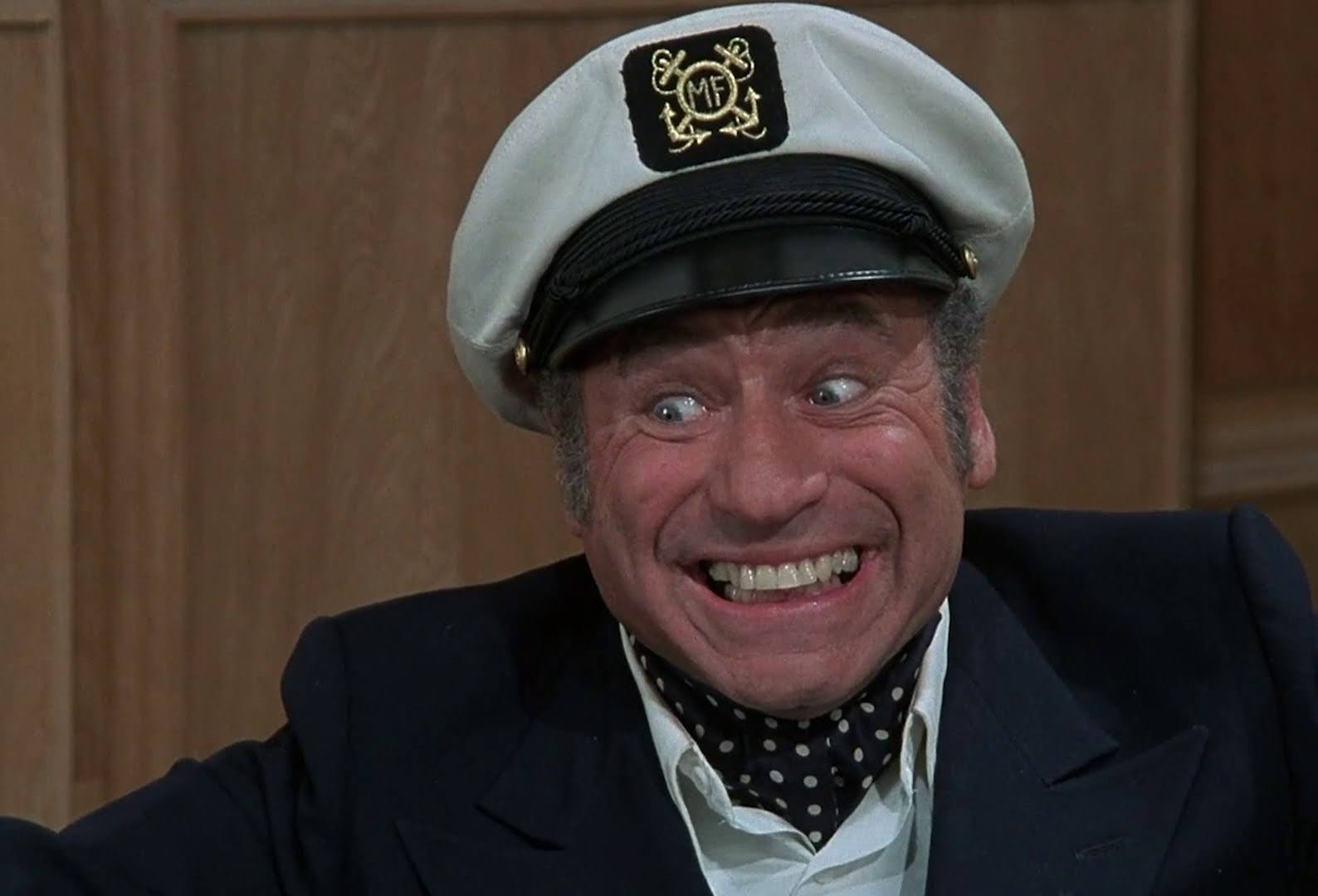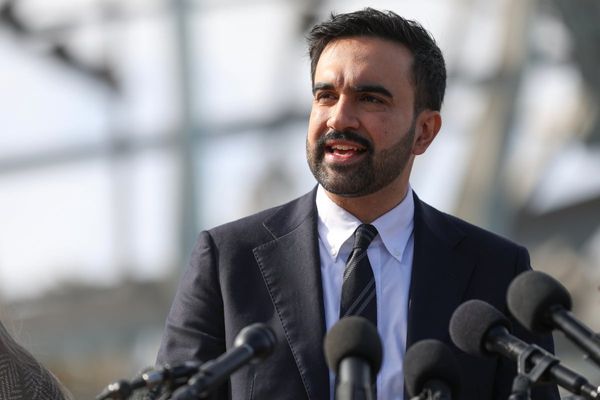
Few filmmakers have left a mark on American comedy as indelible as Mel Brooks.
Approaching an incredible 98-year-old, the EGOT winner (Emmy, Grammy, Oscar, and Tony) remains one of Hollywood's most celebrated satirists, whose films continue to provoke laughter—and occasionally controversy—decades after their release.
While his work on television shows like "Get Smart" and "Your Show of Shows" helped establish his comedic voice, his fearless film directing and acting showcases his extraordinary genius for parody and satire.
So, let's take a moment to showcase all the classics and pieces Brooks gave us over the years – from genre-bending westerns to monster movie homages; these films demonstrate why Brooks remains one of cinema's most beloved visionaries.
Young Frankenstein (1974)
Mel Brooks' black-and-white masterpiece—co-written with star Gene Wilder—stands as his most perfect comedic achievement. It follows Dr. Frederick Frankenstein ("Fronk-en-steen") as he reluctantly embraces his grandfather's legacy and creates his own monster.
Brooks insisted on authenticity, filming in black-and-white during the color era and securing the actual laboratory equipment from the 1931 original. His restraint allows the stellar cast—Wilder, Feldman, Garr, Leachman, and Boyle—to deliver both sophisticated wordplay and outrageous physical comedy.
The now-legendary "Puttin' on the Ritz" sequence almost didn't happen; when studio executives wanted it cut, Brooks famously declared, "If I'm the director, then I say it stays in!"
The scene became comedy gold, helping earn an Oscar nomination for Best Adapted Screenplay and eventual preservation in the National Film Registry—a rare honor for comedy.
Blazing Saddles (1974)
If Young Frankenstein represents Brooks' refinement, Blazing Saddles stands as his boldest creation. Released the same year, this western parody tackles racism head-on through Black sheriff Bart (Cleavon Little) who's appointed to a bigoted frontier town.
Co-written with Richard Pryor, among others, the film delivers searing commentary on American racism through outrageous comedy. Brooks later admitted, "I couldn't get away with a third of what I did in Blazing Saddles today."
The film famously shatters the fourth wall, culminating with characters bursting through the Warner Bros. studio lot—a still-revolutionary meta-cinema moment. Harvey Korman's villain Hedley Lamarr ("not Hedy!") and Gene Wilder's alcoholic Waco Kid perfectly complement Little's charismatic sheriff.
Studio executives were horrified after the first screening, but Brooks remained steadfast.
The film became the highest-grossing western of its time and later earned another preservation in the National Film Registry—recognized as vital American cinema that challenged perceptions through laughter.
Silent Movie (1976)
In perhaps his most conceptually daring film, Brooks created a modern silent movie about a director trying to make a silent movie in an era of talkies—a brilliant meta-commentary delivered with visual humor and intertitles.
Brooks stepped in front of the camera as lead character Mel Funn, a washed-up director attempting a comeback alongside his sidekicks Dom Bell (Dom DeLuise) and Marty Eggs (Marty Feldman).
The trio's physical comedy recalls the greats of the silent era—Chaplin, Keaton, and Lloyd—while adding Brooks' signature absurdist, slapstick touch.
The film's most inspired joke comes from legendary mime Marcel Marceau, who makes a cameo as himself—and delivers the only spoken word in the entire film: a simple "Non!" when asked to participate in Funn's silent production.
Silent Movie demonstrates Brooks' deep knowledge of film history and his willingness to experiment with form.
The movie features cameos from stars like Burt Reynolds, James Caan, and Anne Bancroft (Brooks' wife), all playing themselves and embracing the physical comedy required for a film without dialogue.
Though less commercially successful than his previous works, Silent Movie showcases Brooks at his most conceptually innovative, proving that his understanding of visual comedy transcended the need for words.
High Anxiety (1977)
Brooks' tribute to Alfred Hitchcock recreates iconic scenes from The Birds, Vertigo, and Psycho with precision before brilliantly twisting them into absurdity. Taking the lead as Dr. Richard Thorndyke—a psychiatrist with a fear of heights caught in a murder mystery—Brooks delivers one of his most committed performances, with Madeline Kahn providing genuine heart as his love interest.
Before filming, Brooks screened the script for Hitchcock himself, who suggested gags and blessed the parody. After completion, Brooks sent Hitchcock fine wine as thanks; the Master of Suspense responded with a drawing of his famous silhouette—altered to include Brooks' signature Panama hat—a gesture Brooks treasured.
The shower scene parody (with newspaper ink swirling down the drain instead of blood) exemplifies Brooks' talent for visual recreation with comedic transformation.
The film reveals his deep cinematic knowledge and unique ability to honor a master filmmaker's techniques while maintaining his distinctive comedic voice.
History of the World: Part I (1981)
Brooks' most audacious anthology comedy skewers historical epochs from the Stone Age to the French Revolution through increasingly outrageous vignettes. Brooks himself takes multiple roles, including King Louis XVI, a Roman "stand-up philosopher," and Moses—delivering the famous visual gag involving the original Fifteen (not Ten) Commandments.
The Roman sequence introduces Brooks' inspired creation: the world's first critic, who harshly dismisses primitive art forms—a meta-commentary on artistic reception itself. Most daringly, the Spanish Inquisition transforms religious persecution into a lavish Busby Berkeley musical number, exemplifying Brooks' fearlessness in satirizing even sensitive historical subjects.
The title itself was a joke—despite the end-credits teaser promising "Part II" with "Hitler on Ice" and "Jews in Space," no sequel was planned. Though critically divisive initially, the film has achieved cult status for its uncompromising approach to historical satire and boundary-pushing comedy that seems even more daring decades later.
To Be or Not to Be (1983)
In this rare remake, Brooks updated Ernst Lubitsch's 1942 wartime comedy about a Polish theater troupe outwitting Nazis, starring alongside his wife Anne Bancroft.
As Frederick and Anna Bronski, leaders of a struggling Warsaw theater company during Germany's invasion of Poland, the real-life couple displays remarkable chemistry—particularly in their multilingual rendition of "Sweet Georgia Brown" in Polish.
The film masterfully finds humor in desperate circumstances without diminishing the gravity of the Nazi occupation. Brooks, a Jewish WWII veteran, brings personal understanding to this delicate balance.
Though his decision to remake a beloved classic raised eyebrows, Brooks' version stands on its own while honoring Lubitsch's "touch"—that blend of sophistication, wit, and humanity.
This underappreciated work showcases Brooks' evolution as a filmmaker capable of both broad comedy and surprising emotional depth.
Spaceballs (1987)
Brooks' sci-fi parody aims at Star Wars while skewering merchandising culture and space opera tropes. Playing both President Skroob and Yogurt (thinly veiled Emperor and Yoda), Brooks delivers some of his most quotable lines alongside Bill Pullman's rakish Lone Starr, John Candy's half-man-half-dog Barf, and Rick Moranis' scene-stealing Dark Helmet.
The film reaches peak meta-commentary when characters watch their own movie on VHS to determine what happens next—brilliantly breaking the fourth wall while commenting on the emerging home video market. Its most ingenious irony comes through Yogurt's proclamation: "Merchandising! Where the real money from the movie is made!"
While parodying Star Wars' product empire, these fictional Spaceballs items later became actual merchandise, proving Brooks' satirical point.
Though initially met with mixed reviews, Spaceballs achieved cult status among 80s and 90s kids, securing its place as one of Brooks' most enduring works through home video and television.
Life Stinks (1991)
Brooks' most significant departure from parody follows billionaire Goddard Bolt (played by Brooks), who bets he can survive in Los Angeles slums for 30 days without resources, only to find himself genuinely homeless when his rival sabotages the arrangement.
This social commentary represents Brooks' most earnest attempt to blend comedy with genuine pathos. As Bolt befriends fellow homeless individuals and falls for Molly (Lesley Ann Warren), the film maintains comedic moments but feels decidedly more grounded than Brooks' other works.
Life Stinks showcases Brooks' direct engagement with contemporary issues—examining wealth inequality, urban development, and society's treatment of its most vulnerable with surprising sensitivity.
Though commercially unsuccessful and often overlooked, this passion project reveals a filmmaker willing to risk his established formula to explore substantive themes—evolving beyond parody into meaningful social critique.
Robin Hood: Men in Tights (1993)
Returning to familiar parodic territory, Brooks tackled the Robin Hood legend—particularly Costner's Prince of Thieves—with this musical comedy starring Cary Elwes as the charismatic outlaw.
The film introduced wider audiences to Dave Chappelle in his first major role as Ahchoo, while Brooks appears as Rabbi Tuckman—a Jewish twist on Friar Tuck generating numerous cultural jokes.
Men in Tights embraces Brooks' fourth-wall breaking, most memorably when characters consult the actual screenplay to settle plot disputes. The inspired casting of Patrick Stewart to deliver "Unlike some other Robin Hoods, I can speak with an English accent" perfectly encapsulates Brooks' approach—acknowledging source material weaknesses while celebrating the genre itself.
Though arriving late in Brooks' directorial career, the film demonstrates his enduring ability to attract top talent and find fresh angles on familiar material, connecting with younger audiences through a skillful blend of classic and contemporary comedy styles.
Dracula: Dead and Loving It (1995)
Brooks' final directed film returned to monster movie territory, this time with Leslie Nielsen as the bumbling Count Dracula. The film combines parodies of various vampire adaptations, from Lugosi's classic performance to Coppola's recent Bram Stoker's Dracula.
Nielsen's deadpan delivery—perfected through the Naked Gun series—offers a different comedic energy than Wilder's neurotic brilliance in Young Frankenstein.
Brooks himself appears as vampire hunter Van Helsing, delivering a performance highlighted by an elaborate accent and physical comedy during an increasingly bloody stake-driving sequence.
Though not matching his earlier monster movie parody's success, the film contains moments of classic Brooks humor, particularly in its playfully exaggerated shadows and silent film techniques that showcase his appreciation for cinema history.
As Brooks' directorial swan song, Dead and Loving It completes a remarkable career behind the camera, bookended by monster movie parodies that demonstrated his enduring love for the classic films that shaped his comedic sensibilities.
The Twelve Chairs (1970)
This early Brooks film adapts a Soviet novel following an impoverished former aristocrat searching for family jewels hidden in one of twelve dining chairs scattered across Soviet Russia. Starring Ron Moody, Frank Langella, and Brooks himself as opportunistic servant Tikhon, it stands as his most literary adaptation.
Shot in Yugoslavia (standing in for Russia), the film possesses a more international feel than his later, distinctly American productions.
While featuring Brooks' trademark humor, The Twelve Chairs shows a more restrained comic sensibility, balancing slapstick with genuine pathos for characters struggling in post-revolutionary Russia.
Though less widely seen than his genre parodies, this early work reveals Brooks' versatility in adapting diverse source material and his foundational interest in desperate characters driven to increasingly absurd situations—a theme recurring throughout his career.
Wrapping up
As Mel Brooks approaches his centennial, his film legacy continues, captivating audiences across generations. His willingness to push boundaries—whether breaking the fourth wall, tackling taboo subjects, or mercilessly parodying beloved genres—has influenced countless filmmakers who followed.
From Young Frankenstein's sophisticated monster movie tribute to Blazing Saddles' audacious racial commentary, Brooks' films blend lowbrow humor with highbrow literary and cinematic references, creating a body of work that rewards both casual viewers and serious cinema students.
In an era of increasingly safe, algorithm-tested comedy, Brooks' fearless satire reminds us that great humor often comes from risk-taking and boundary-pushing. His films don't just make us laugh—they make us think about why we're laughing, a testament to comedy's power as social commentary.
As Brooks himself once said: "Humor is just another defense against the universe." His unique cinematic voice continues defending us all, one outrageous gag at a time.







